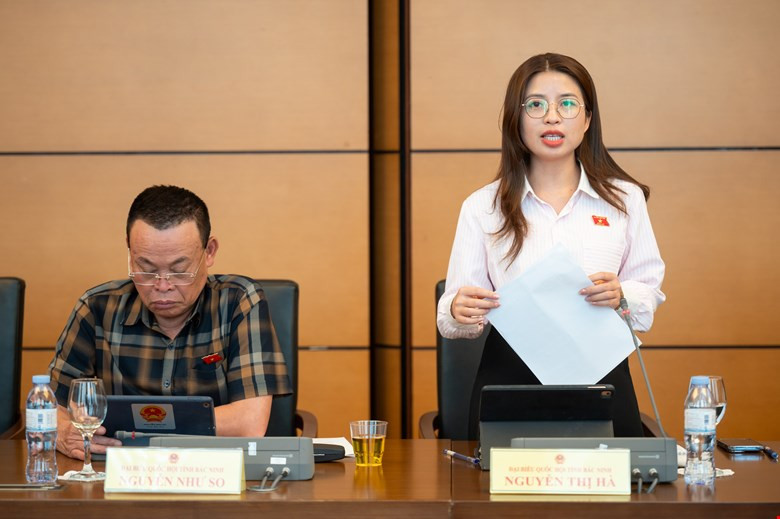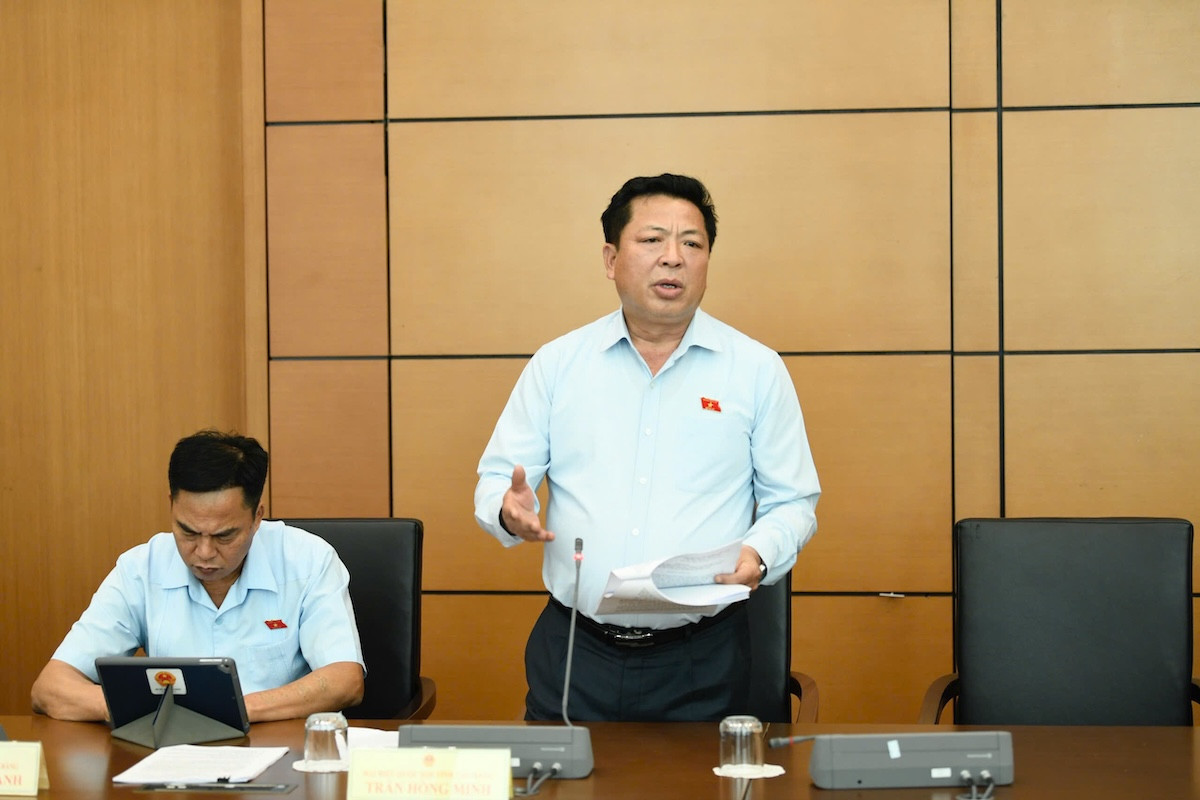During a group discussion held by the National Assembly on the afternoon of June 16, lawmakers reviewed the draft amendment to the Railway Law. Many deputies highlighted the urgent need to improve legal frameworks to enhance railway safety and efficiency.
Delegate Nguyen Thi Ha from Bac Ninh acknowledged progress in the draft law, particularly in addressing railway integration with other modes of transport. However, she noted that current provisions remain general and lack actionable mechanisms.
She called for more specific provisions to ensure seamless connectivity between railways and seaports, airports, inland ports, and logistics centers. She also stressed the importance of mandating the inclusion of railway infrastructure in the planning and investment of major ports and logistics hubs.

“This is not merely a technical issue but a strategic direction for sustainable development that can mobilize private resources into strategic transport infrastructure,” she said.
Meanwhile, delegate Ngo Trung Thanh (Dak Lak) proposed that the draft law mandate the government to set a clear timeline for resolving dangerous railway crossings and unauthorized access points to reduce accident risks at intersections between roads and railways.
Delegate Nguyen Van Quan (Hau Giang) pointed out that the current law mainly prohibits external sabotage, yet internal violations—such as procedural errors, substandard surveying, design, and construction—remain unaddressed.
He recommended adding these internal infractions to the list of prohibited acts to enhance deterrence and ensure railway safety.
Creating a unified legal foundation for railway-specific mechanisms

Minister Tran Hong Minh stated that implementing major railway lines in the coming years would require multiple special mechanisms. For example, the North-South line alone needs 16 mechanisms, while the Hanoi - Lao Cai - Hai Phong route requires its own specific policies.
“Amending the Railway Law is meant to integrate all these mechanisms into a single law, forming a unified legal framework,” the Minister explained. “The drafting process has received input from the Government and the Politburo and is now being refined following review by relevant National Assembly committees.”
The revised draft includes policies on state incentives for railway development, with clearly defined criteria to attract private investors.
The Minister emphasized that relying solely on state investment would be insufficient, underscoring the need for private sector participation.
He noted that five investors have already registered interest in railway projects, highlighting the necessity for enabling mechanisms to facilitate effective investment.
A notable addition to the draft law is the inclusion of transit-oriented development (TOD) models.
“This is a crucial solution,” he said. “Instead of recovering capital solely through ticket sales - which could take a century - investors will be allowed to develop and benefit from land around stations and urban areas, ensuring both economic viability and modern urban development.”
The revised law also proposes allowing land clearance to be separated into an independent project. This would shorten the preparation timeline and save costs by ensuring clean land is ready before construction begins.
Regarding technology transfer and increasing localization in the railway sector, the Minister stressed that whether the investor is public or private, there must be a roadmap for technology transfer.
In the short term, Vietnamese contractors can manage sub-rail infrastructure. In the long term, domestic production of rails, train cars, locomotives, components, and parts must be prioritized to ensure technological independence.
Clearing legal hurdles to advance Vietnam’s railways
Minister Tran Hong Minh said the draft law has been comprehensively revised to eliminate legal bottlenecks and create a breakthrough in railway development.
He pointed out that current urban railway projects in Hanoi and Ho Chi Minh City - such as Cat Linh - Ha Dong, Nhon - Hanoi Station, and Ben Thanh - Suoi Tien - are heavily reliant on foreign partners. This has led to delayed construction, missed deadlines, budget overruns, and limited control over technology supply chains.
“The use of different technologies for each project - for instance, Chinese tech for Cat Linh - Ha Dong, French for Nhon - Hanoi Station, and Japanese for Ben Thanh - Suoi Tien - results in a lack of system interoperability, creating challenges in maintenance and parts replacement due to foreign dependency,” the Minister stated.
The Vinh